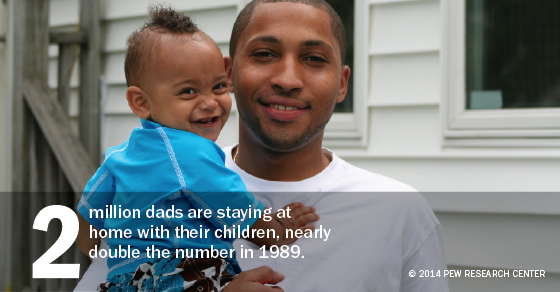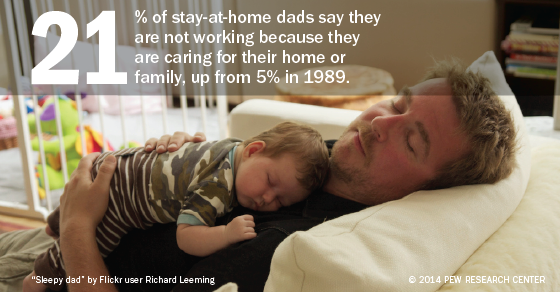
The number of fathers who stay at home with their children has increased, according to a Pew Research Center analysis of government data. Here are some of the report’s highlights, edited down to tweet length, with links and relevant charts included. This report was written by @DrGMLivingston and edited by @kim_c_parker.
How many stay-at-home fathers are there?
- The number of fathers who stay at home with their children has nearly doubled since 1989
- There were 1.1 million stay-at-home fathers in 1989; now the number is 2 million
How do their numbers compare to stay-at-home mothers?
- Most stay-at-home parents are mothers, but fathers represent a growing share: 16%, up from 10% in 1989
- Among all stay-at-home parents in the U.S., 16% are fathers, and 84% are mothers

Why are fathers staying at home?
- 21% of stay-at-home dads say they’re at home to care for family, up from 5% in 1989
- Reasons dads stay at home: 23% can’t find a job, 21% to care for home or family, 35% due to illness, disability
- Biggest share (35%) of stay-at-home fathers are at home due to illness or disability
Who are stay-at-home fathers demographically?
- On average, stay-at-home fathers worse off financially, less educated than working dads
- 47% of stay-at-home fathers are living in poverty vs. 8% of working fathers
- 52% of stay-at-home fathers are white, 20% are Hispanic and 16% are black
What does the public think about fathers staying at home?
- 51% say kids better off if mother is at home; just 8% say better off if dad is at home
- 34% say children just as well off if mother works; 76% say the same of fathers




